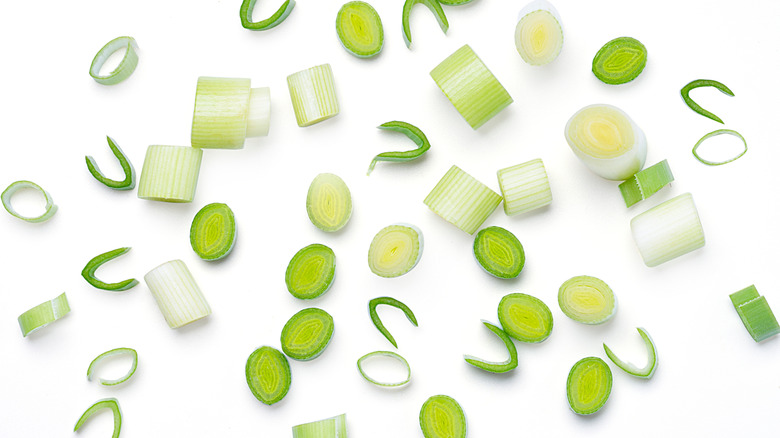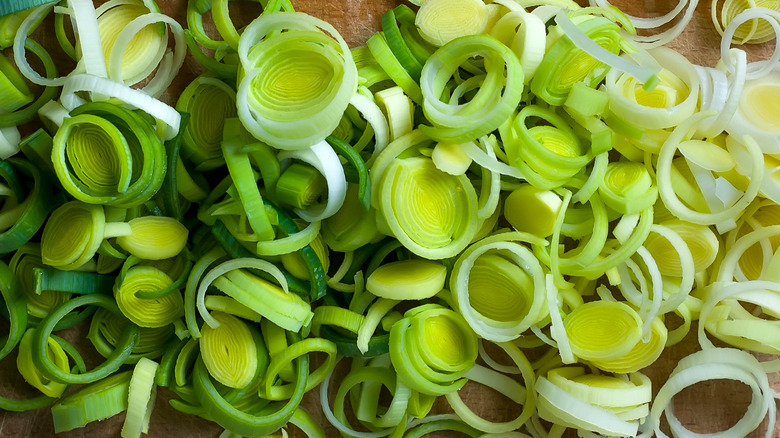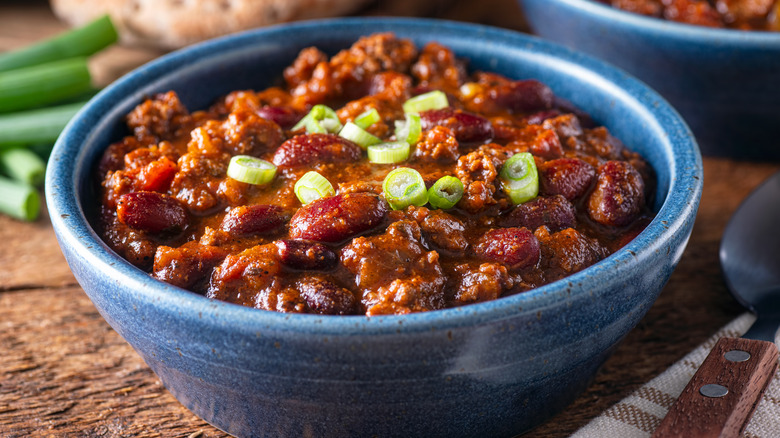What's The Difference Between Scallions And Leeks?
We may receive a commission on purchases made from links.
Vegetables are among the healthiest foods on earth; it's no wonder why parents tell their children to eat them at the dinner table. However, with a whopping 1,097 vegetable species cultivated worldwide, according to a 2018 Biodiversity International study (via the Alliance of Bioversity International and CIAT), you're bound to get confused about them from time to time.
One of those confusing vegetables is our allium friend, the onion. You're probably most familiar with neutral cooking onions, such as white onions, yellow onions, red onions, and sweet onions. But there are also plenty of others, two of them being leeks and scallions (otherwise known as green onions).
So, what's the difference between these two types of onions? After all, they both have green stalks with bulbs at the bottom. Here's what sets these two green onions apart, along with how you can best use each of them in your recipes.
Leeks vs. scallions
Leeks and scallions belong to the same genus but are different species, MasterClass explains. They're similar in appearance, with each having green stalks that fade into white, bulb-like roots. At first glance, a scallion stalk looks like a mini version of a leek. Both are used in gourmet cooking and are touted for having a similar taste. But can you use scallions and leeks interchangeably?
Even though leeks and scallions both add unique flavor to countless recipes, they're still quite different. For starters, scallions are smaller than leeks and are typically sold in bunches, whereas leeks are sold singly or in groups of twos or threes. According to MasterClass, their thickness also plays a significant factor in their difference, with leeks being much thicker in size than scallions. Regarding taste, leeks have a mild onion flavor, with some stating it has a garlic-like taste that settles after being cooked. Speaking of cook time, leeks also require a longer cooking time, as they're thicker and tougher than scallions.
On the other hand, scallions (or green onions) have a strong, sharp flavor resembling the taste of pepper. Thanks to their paper-thin diameter, they cook much faster than leeks, explains The Washington Post. Typically, not as many are needed for recipes — they're small but mighty in taste.
How to use leeks and scallions in recipes
Because scallions and leeks differ in taste and size, how do you know which recipes to use them in? Leeks can be used in various ways, with many people using them raw or cooked and adding them to soups or salads. You've probably heard of the leek's most famous recipe, potato leek soup, where you braise leeks and purée them into a creamy, buttery potato bisque. Leeks can also be used in filling for dumplings or pierogies. You can also grill or caramelize them as a delicious savory side dish.
Scallions, too, can be used raw or cooked. But unlike leeks, they're better used as a garnish, as they're more potent in flavor. Scallions are best used as salad or soup toppers and can primarily be seen on top of stir fry, ramen noodles, and chili. You can also sauté scallions for a softer texture in your stir-fry recipes.
These two onions come from the same family and look oddly similar. But if you use them interchangeably, you'll find your recipe tasting much different than you planned.


